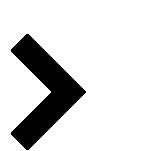REVIEWED P2 OPTIONS
| ||
Reviewed Cleaning and Degreasing Operations OptionsFollowing are a list of options that have been reviewed by pollution prevention specialists. These options have worked at other facilities and may work at yours. |
||
reduce solvent evaporation | ||
| Increase the freeboard height to significantly reduce solvent evaporation. | ||
automatic parts lift | ||
| Install automatic parts lift on vapor degreasers | ||
Use drain racks | ||
| Use drain racks to reduce dragout. | ||
use rotating rack. | ||
| Drain parts using a rotating rack. | ||
Clean parts | ||
| Determine whether parts need to be cleaned. | ||
Use rust inhibitors and lubricants | ||
| Use easy-to-clean or no-clean rust inhibitors and lubricants | ||
Review handling process | ||
| Review the handling process of the parts to determine why parts are getting dirty and take action to prevent it from happening in the future. | ||
clean stock | ||
| Purchase clean input clean | ||
Use elbow grease | ||
| Use elbow grease. When possible, clean by brushing and wiping. | ||
Use aqueous-based cleaners | ||
| Use aqueous-based cleaners | ||
Use Solvents | ||
| Use solvents with a low vapor pressure and high flash point. | ||
Use citrus or terpene cleaners. | ||
| Use citrus or terpene cleaners. | ||
Keep lids on | ||
| Keep lids on your solvent-cleaning vessels. | ||
air-lock vapor degreaser | ||
| Use an air-lock vapor degreaser | ||
reduce drafts | ||
| Minimize evaporation by reducing drafts. | ||
Install refrigerated coils | ||
| Install refrigerated coils on the freeboard above the primary condenser coils. Working emissions are reduced by approximately 20-50 percent for above freezing coils and 30-80 percent for below freezing coils. | ||
Use counter-current rinsing. | ||
| Use counter-current rinsing. | ||
reuse aqueous cleaners. | ||
| Skim/filter and reuse aqueous cleaners. | ||
install filtration or distillation units. | ||
| Reuse solvents by installing filtration or distillation units. | ||
Install bioremediation parts washer | ||
| Install a bioremediation parts washer that uses enzymes to eat oil and grease. | ||
Segregate solvents | ||
| Segregate solvents to allow recycling | ||
Keep solvents out of used oil. | ||
| Keep solvents out of used oil. | ||
Keep fluids out of solvents | ||
| Keep fuel, brake fluid, and other fluids out of solvents to prevent the mixture from becoming hazardous. | ||
Keep solvents out of aqueous cleaners. | ||
| Keep solvents out of aqueous cleaners. | ||
solvent storage. | ||
| Use secondary containment for solvent storage. | ||
fix and prevent leaks. | ||
| Implement a maintenance program to fix and prevent leaks. | ||
increase drain time. | ||
| Reduce dragout by increasing drain time. | ||
reduce dragout. | ||
| When dipping parts, lift them such that it reduces dragout. | ||
Install lids | ||
| Install sliding lids on solvent tanks. | ||
 Find Options for other processes
Find Options for other processes





